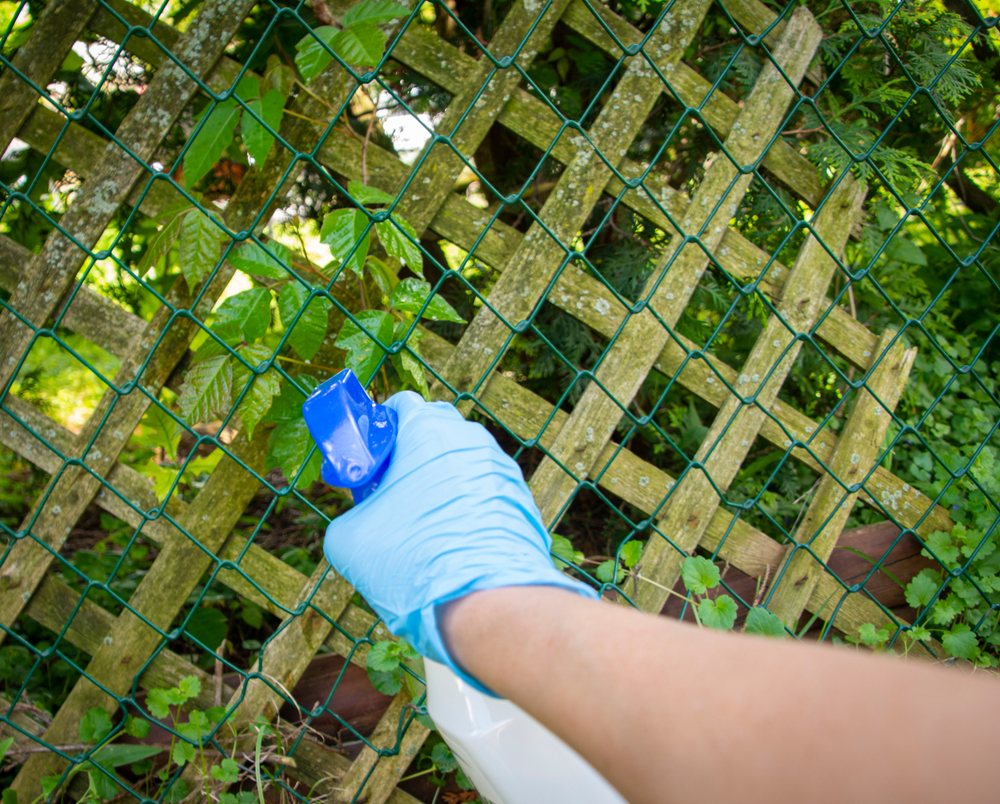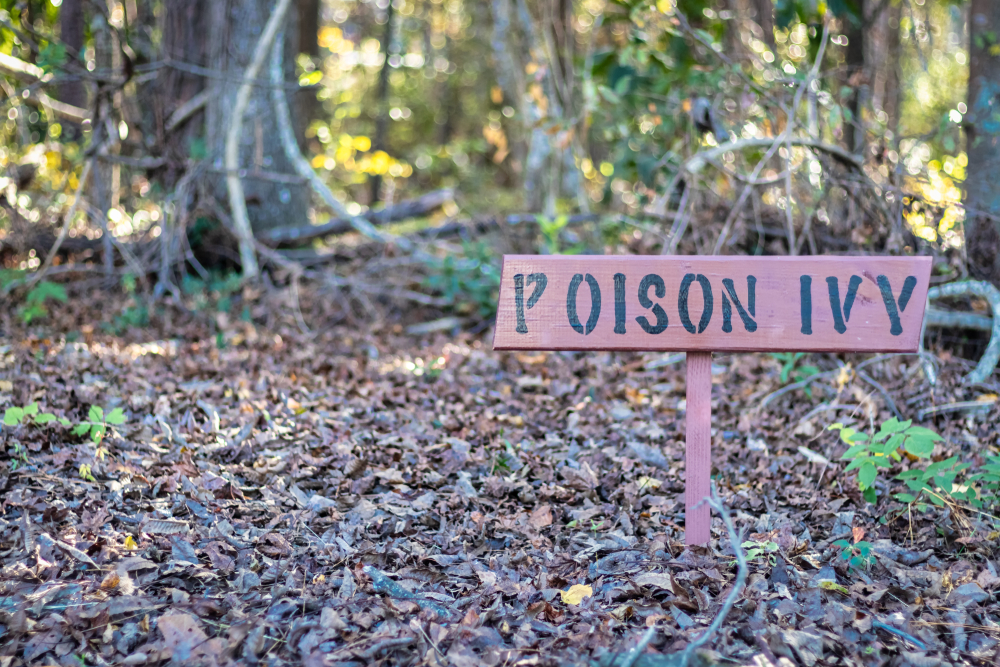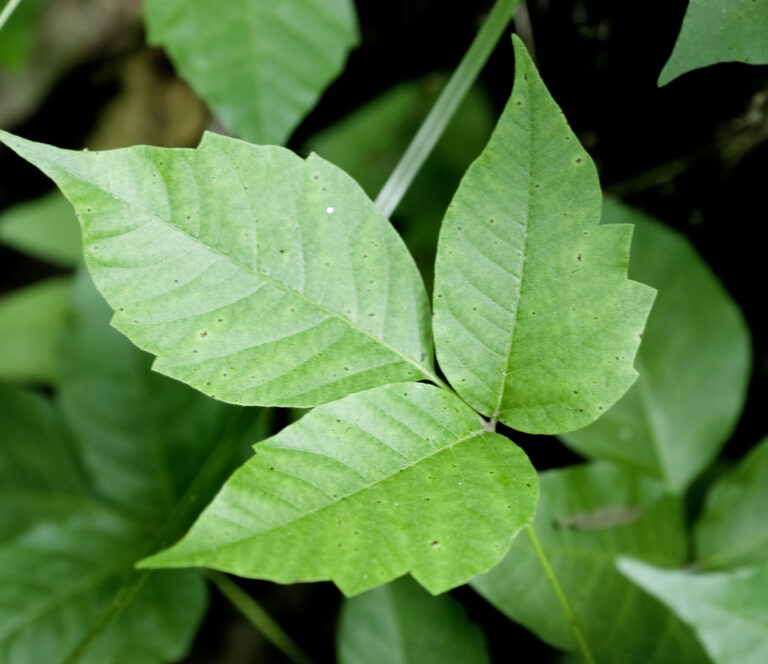If you clicked on an article called “How to Kill Poison Ivy,” then we can safely assume that either your yard is overrun by dangerous weeds or you’re an increasingly desperate Batman. For the purposes of this guide, we’ll go with the first assumption.
Poison ivy is one of the worst plants you can find growing in your yard — a fact you can undoubtedly attest to if you’ve ever had the misfortune of coming in contact with it. As a result, you’ll want to remove it immediately and completely as soon as you notice it cropping up.
However, totally eradicating it from your lawn isn’t as simple as grabbing a hoe or a bottle of weed killer. There are certain steps you need to take to ensure that, once removed, it doesn’t come back.
How to Recognize Poison Ivy
You may have heard the old saying, “Leaves of three, let it be.” That’s because poison ivy is known for having three leaves, so you should naturally be wary of any such plant. That’s not enough to make a positive identification, however.
Poison ivy actually looks different at different times of year. In the spring, it has red leaves, but those give way to green buds by summertime. You’ll also see small, off-white berries between the leaves if you get close enough (don’t get close enough).
In the fall, the leaves will turn orange, yellow, or back to red. They’ll stay red through the winter into the spring.
You can find poison ivy in every U.S. state except Alaska and Hawaii, so unless you live in one of those two places, you should learn to recognize it.
If you’re not sure if what’s growing in your backyard is poison ivy or not, put on some heavy gloves and clip a few leaves. Then, compare what you see to pictures on the internet. If that doesn’t work, rub the leaves on someone you hate and see if they have a reaction to it — you’ll go to jail, but you’ll also have your answer.
The Difficulty in Killing Poison Ivy
As alluded to above, poison ivy is one of the more difficult weeds to kill. There are a few reasons for this.
One is that it’s a creeping vine, and it tends to intertwine itself with plants you don’t want to kill. That makes it hard to chop or spray, so you may have to put on gloves and pull it out if you want to spare the other vegetation in your yard.
It also prefers shady areas, like wooded areas or along fences and walls. This can make it difficult to spot, as well as hard to determine if you’ve fully removed it all.
And you need to remove all of it — roots, stems, leaves, everything — if you don’t want it to come back. That means you need to collect the corpse once you’ve killed it, or else it will come back from beyond the grave to haunt you.
6 Ways to Remove Poison Ivy for Good
1. Chemical Warfare

If you spray a little of these chemicals on the plant, it will die — and usually within a few days.
However, it’s extremely unlikely that you’ll get all the poison ivy the first time you spray, so you’ll need to check after a few days and spray whatever bits you missed. You’ll still need to remove the dead plants as well.
While this method is undeniably effective, many people don’t like using harsh chemicals on their lawn. There’s a good reason for that, too — they’ve been linked to non-Hodgkin’s lymphoma and reproductive and developmental abnormalities, respectively.
Now, it’s important to realize that those health problems only occurred when lab animals were fed massive doses of the respective chemicals for long periods of time. It’s unlikely that the little bit that humans or pets could come in contact with would hurt them, and the EPA currently considers the chemical unlikely to be carcinogenic to humans.
Still, you may not be comfortable spraying the stuff around the grass that your kids play in and your dog sometimes eats, in which case another method may be preferable for you.
2. Manual Labor
Another relatively foolproof method of getting rid of poison ivy is to do it yourself. This could involve using a hoe or just your hands (wear gloves, of course).
The trick is removing the entire root system. Poison ivy’s roots extend about 6 inches below the ground, so you’ll have to dig deep to get everything.
As with spraying pesticides, you’ll almost certainly miss some the first time around. You’ll need to follow up a few days later to see if there’s still any weeds lurking about.
Removing poison ivy manually obviously takes a lot more elbow grease than just spraying the plant with chemicals, and it requires you to come in close contact with it. However, it’s a cheap and effective way to ensure that the weed stays gone for good.
3. Bury It Alive
If there’s a large patch of poison ivy in your lawn, a good way to take it all out in one fell swoop is to place a large sheet of cardboard or some trash bags over the entire area.
This works because it prevents the plant from getting sunlight, which is apparently something plants need to live (they didn’t even try to teach us that in science class). It also doesn’t require you to use harsh chemicals or touch the plant at all.
The problem with it is that it will kill everything under the cardboard, not just the poison ivy. Also, it takes several weeks to work, and if you miss any runners, you may have the same problem next year.
If you decide to use this method, you can cover the sheet with mulch and wood chips. This will help rejuvenate the soil and make it ready for planting the following season.
4. Boil It Alive
Pouring boiling water on the plant will kill it. However, it only damages the parts of the plant that it touches, so the roots will largely remain unharmed — and the rest of the plant will grow back before long. That means you’ll have to repeat the process periodically.
Boiling water will kill any other plants it touches as well, so you have to be careful during the application process. It’s apparently pretty hot as well (seriously, science class has done nothing for us), so be careful not to burn yourself along the way.
This method is best reserved for small batches of poison ivy, especially if it’s far removed from other, more valuable plants. It works better on plants growing in cracks of cement or along a driveway rather than those in the middle of a crowded garden.
5. Use a Homemade Herbicide
If you like the idea of spraying the plants to death but aren’t too keen on using toxic chemicals, you can try your own homemade plant killer instead.
One recipe involves dissolving a cup of salt in a gallon of water and then adding a tablespoon of dish soap, or just using distilled white vinegar. Both of these are completely safe, so you don’t have to worry about your kids or, worse, your dog coming in contact with them.
However, they’re not terribly effective, especially against poison ivy. You may need to reapply the spray often to see results, and even that may not work.
Then again, given how cheap and safe these potions are, you have little to lose by giving them a shot.
6. Get a Goat

This is another extremely effective solution, but…um…it involves getting a goat (or possibly goats).
Goats love to munch on poison ivy, and they’ll clear the stuff out in no time. They’ll also eat every other plant in your backyard, though, and there might be issues with zoning laws you should investigate before bringing one home.
Fortunately, though, many cities now boast goat rental companies, which is a sentence we never thought we’d write. However, it may be a way to get rid of your poisonous plants without making a permanent addition to your family.
This is obviously a drastic measure, but if you’ve always wanted an unorthodox pet, it’s a great way to kill two birds with one stone — or, er, many plants with one goat.
The Plant Is Dead — Now What?
Once you’ve killed the poison ivy, you’ll still need to dispose of the body. That means putting it in a sealed container and taking it somewhere outside your home to get rid of it.
You don’t want to burn it or put it in a composter, as the oil in the plant can still cause irritation with these methods (inhaling poison ivy-infected smoke can even cause a life-threatening rash in your airways, so that’s fun).
You’ll want to be sure that the container is completely sealed if you’re putting it in a trash can as well, or else some poor unsuspecting soul could come in contact with it at some point down the line.
Once you’ve gotten rid of all the evidence, you’ll need to (carefully!) take off your clothes and wash them in cold water. You can wash your gloves as well, or just dispose of them. You’ll also need to clean any tools you used with mineral spirits or rubbing alcohol.
To prevent poison ivy from coming back in the future, plant ground cover in the affected area. The ground cover will soak up all the light, water, and minerals, ensuring the ivy doesn’t have room to grow.
Final Thoughts

No one wants to see poison ivy growing on their property, but if you do, don’t panic. You can get rid of it with a little hard work and perseverance — and you can make sure it stays gone as well.
Then again, if you clicked on this article because you’re Batman, we can’t help you. Maybe try a Batarang? That always works.
